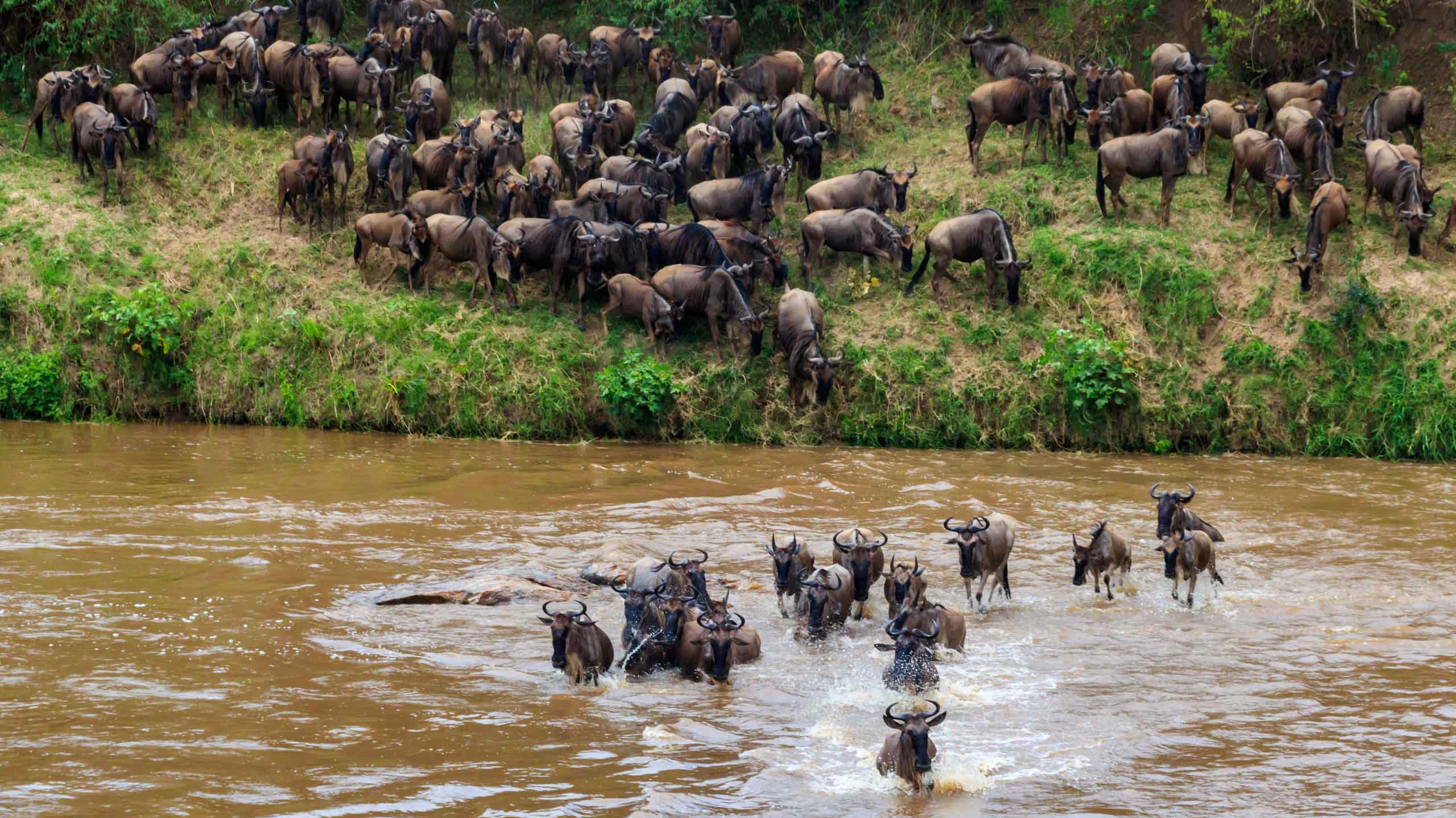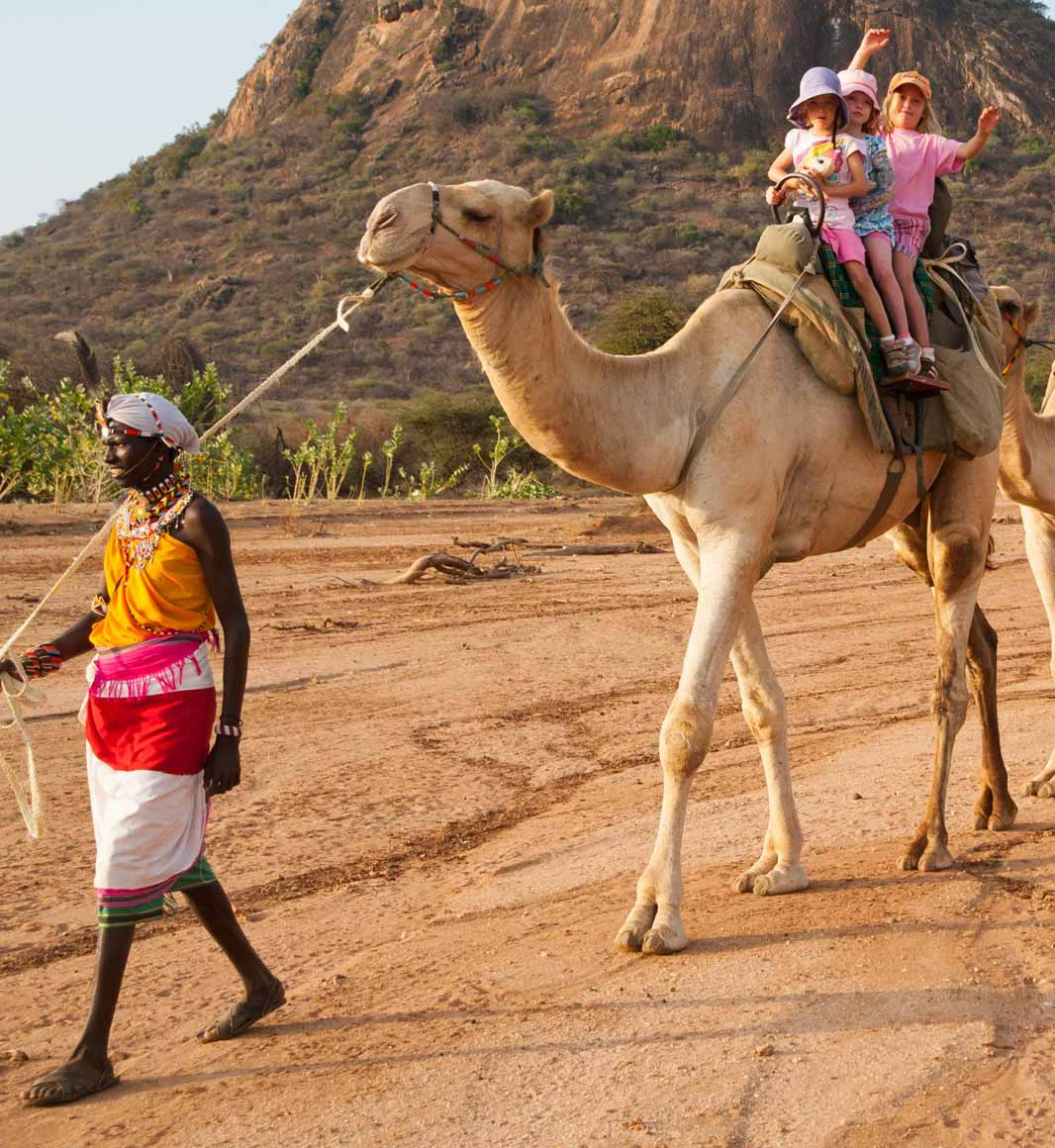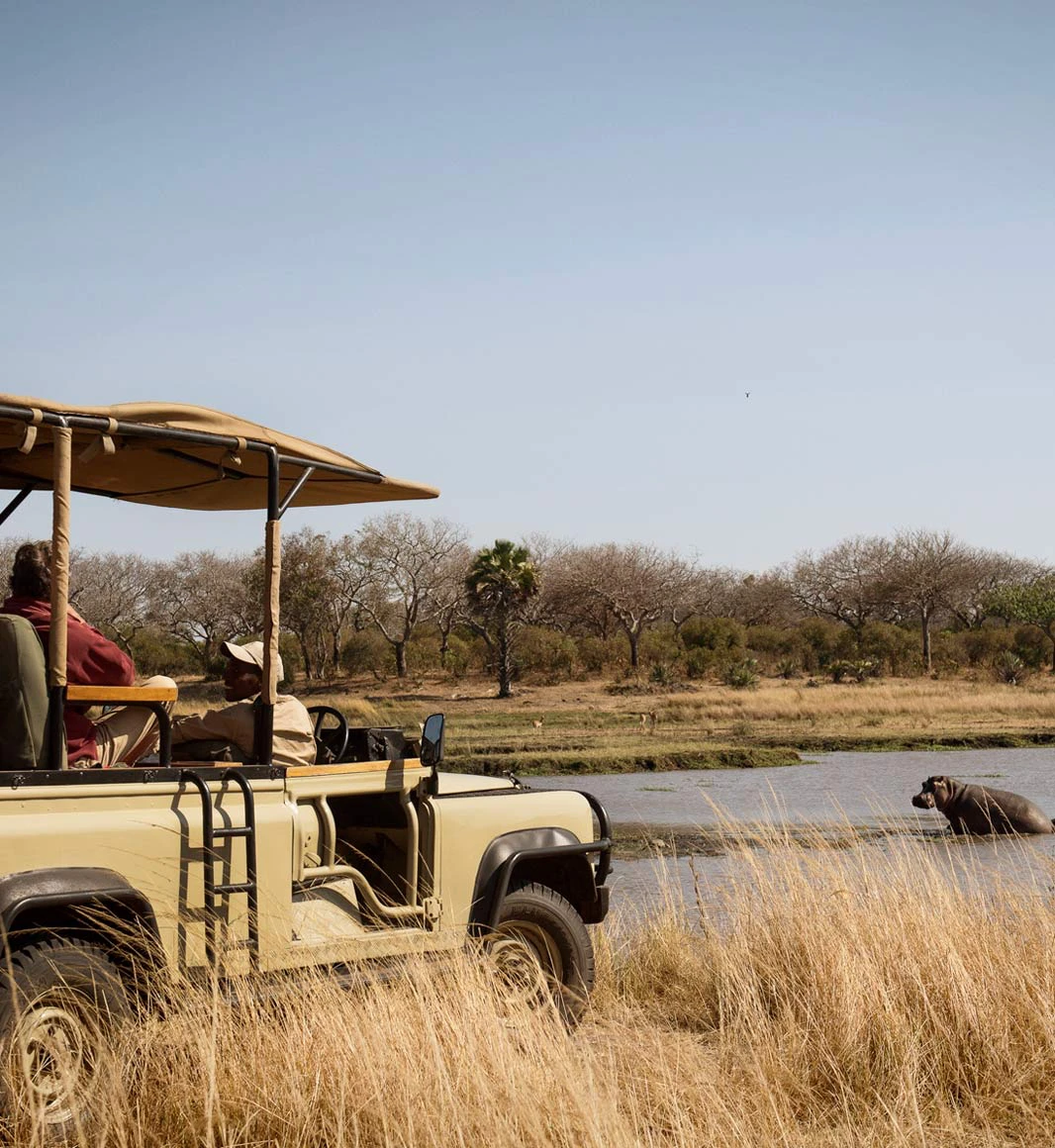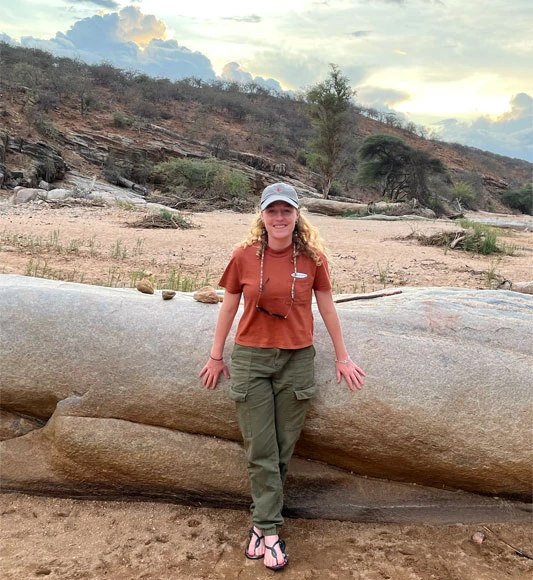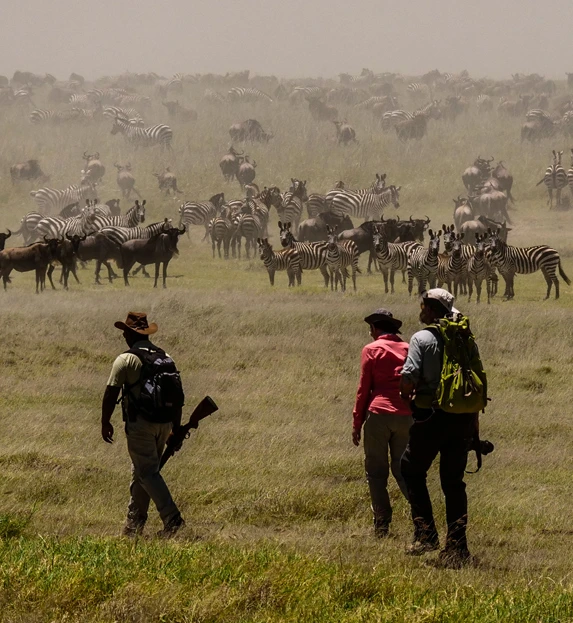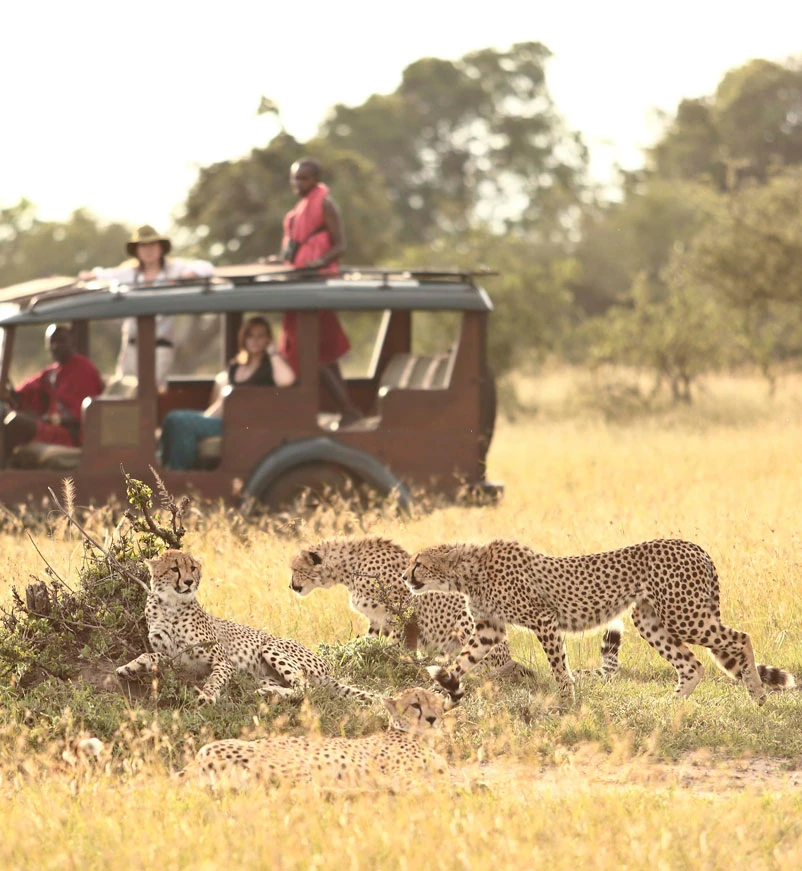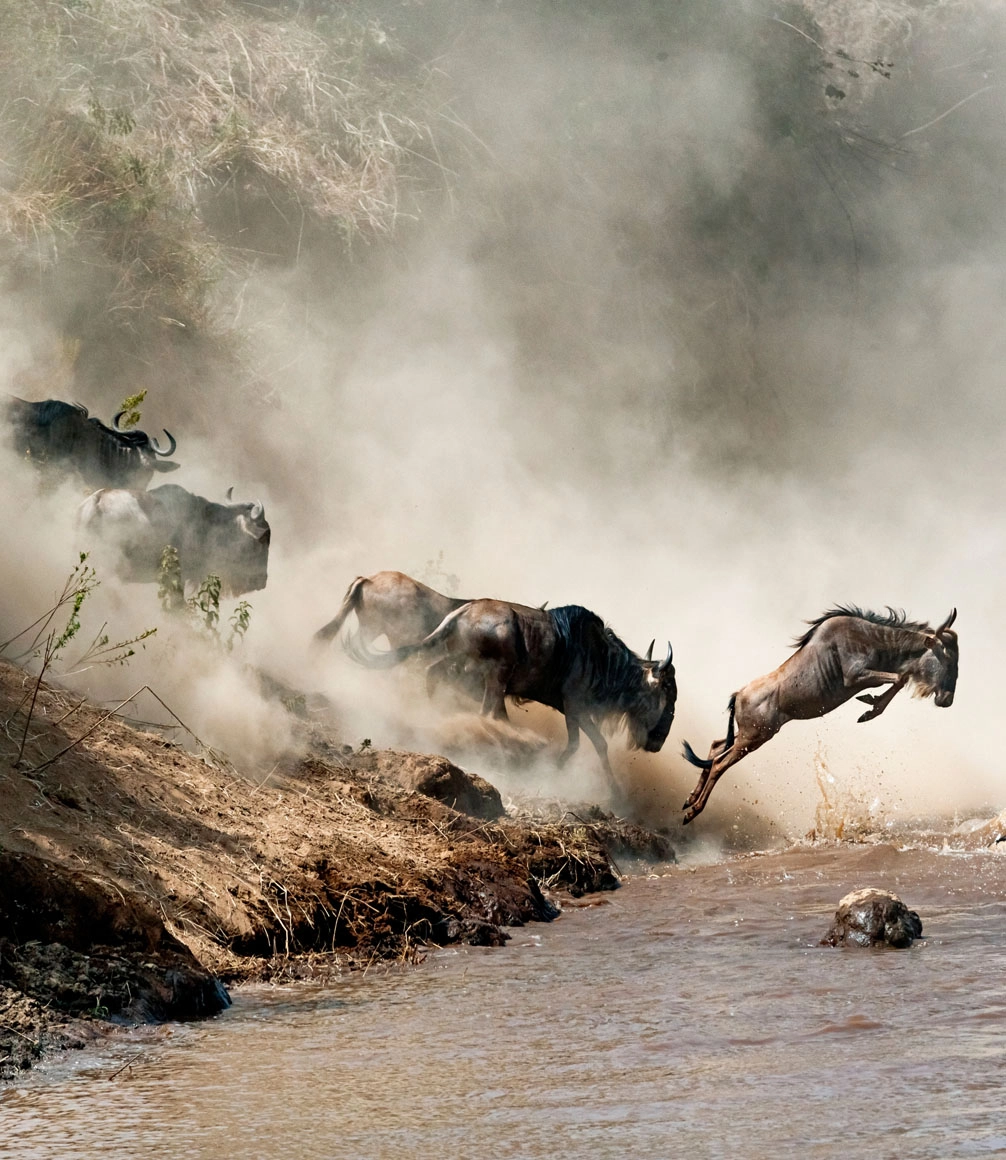
How and where to see the Great Migration on safari in Africa
The Masai Mara and Serengeti of East Africa host one of nature’s most iconic events—the extraordinary migration of wildebeest and zebra. This awe-inspiring spectacle, famed for the dramatic Mara River crossings and the expansive plains filled with newborn wildebeest, is a highlight often showcased in wildlife documentaries.
What is the Great Migration?
The Migration is an endless cyclic journey of two million animals, including 1.5 million wildebeest, 500,000 zebra and the plethora of predators that follow in their wake. They move across the plains of Northern Tanzania and Kenya’s Masai Mara on an annual search for good grazing, driven by the rains. The resulting wildlife experience is an iconic safari I recommend everyone witnesses at least once.
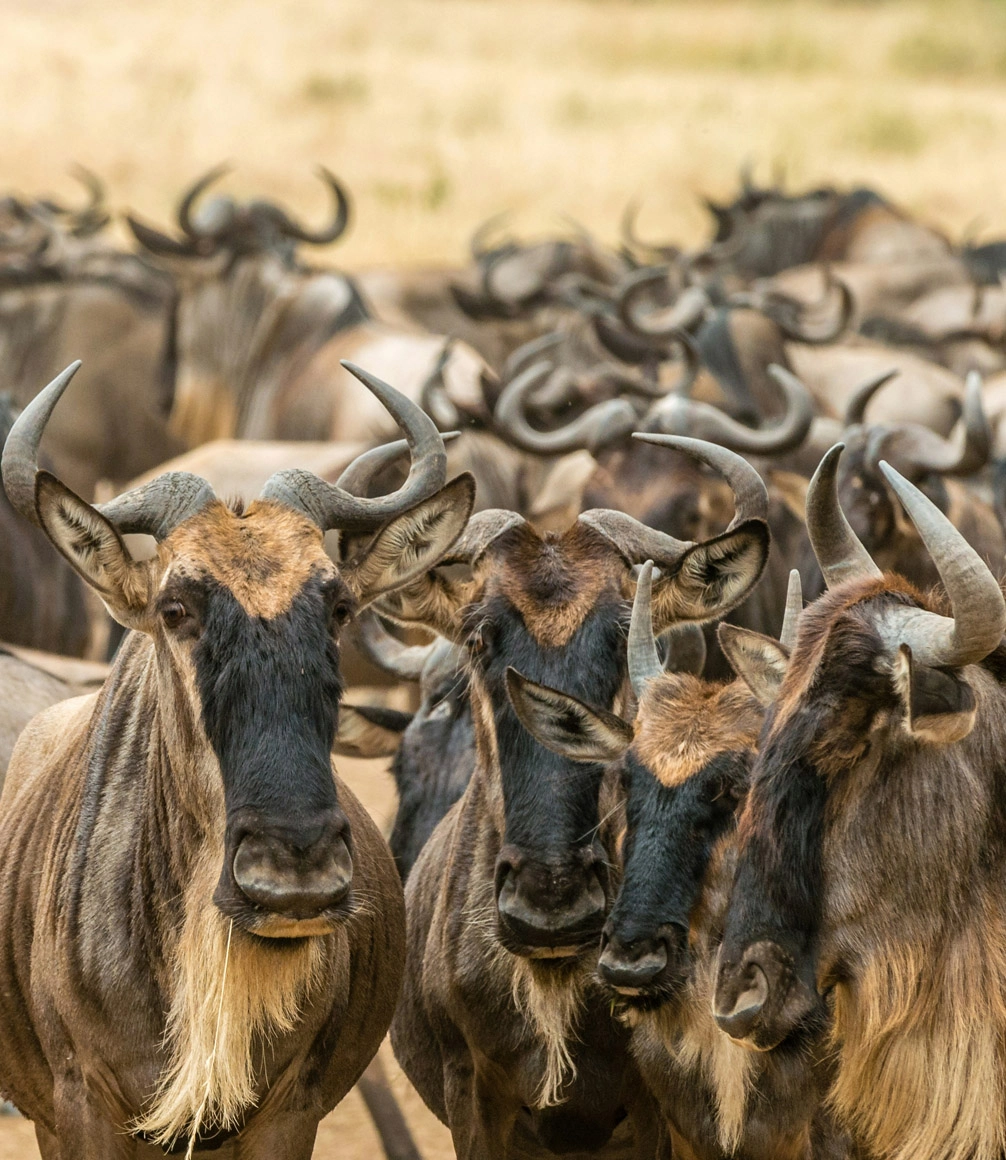
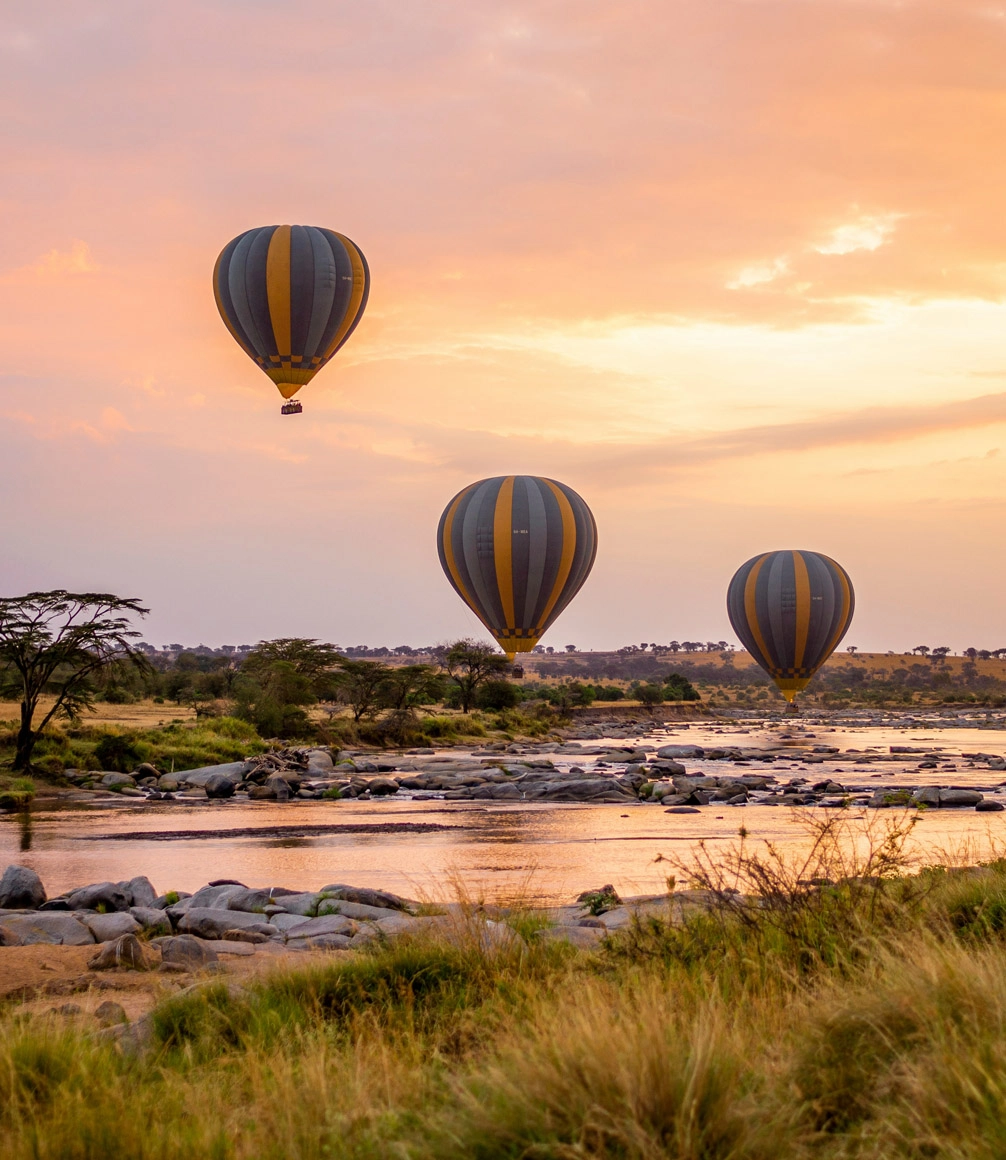
When is the best time to see the Great Migration?
The best time to take a luxury Great Migration safari depends on what you want to see and when you can travel. The wildebeest and zebra move through the Mara-Serengeti ecosystem over the year in a clockwise route, starting the year in the Serengeti for the Calving before moving west, and then later north, for the rut in May and June. Mara River crossings take place in July and August then herds spread out to graze in the Masai Mara through to October, when they head south again to return to the south-eastern Serengeti by the end of the year.
The best way to ensure you see the part of the migration that most interests you is to engage with an expert who can recommend the best locations and times to take your luxury safari. However, we’ve included an overview below of everything you need to know when planning a Great Migration safari in Tanzania and Kenya.
Calving Season: Great Migration end of December to mid-March
From the end of December and continuing into the first two weeks of March, the Great Migration herds are in Tanzania on the short grass plains of the southern part of the Serengeti ecosystem. The precise location each year is largely based on rainfall as the wildebeest have followed the rains seeking new growth of grass and its essential nutrients. The wildebeest graze and give birth to approximately 500,000 calves within a very short period of time: a remarkably synchronized event making for extraordinary wildlife viewing. The abundance of newborn calves attracts predators, making this an excellent time to witness dramatic predator-prey interactions.

As the dry season reaches its peak in March the great herds start to head west in search of water and fresh vegetation, and by April, the ‘long’ rains are falling and the herds scatter somewhat, usually across the south-western reaches of the Serengeti ecosystem.
Grumeti River Crossings and the Rut: the Great Migration in May and June
During May and June the herds of the Great Migration gradually move towards the western corridor, crossing over the Grumeti River. Here in the western reaches of the Serengeti and Grumeti regions ‘the Rut’ takes place – the mating season. For the onlooker this is an electrifying sight with the males engaging in energetic clashes to win access to the females. There is even the opportunity to ride amongst the Migration for those interested in a riding safari.
The Grumeti region has its own resident wildlife and viewing is excellent year round, especially for predators.
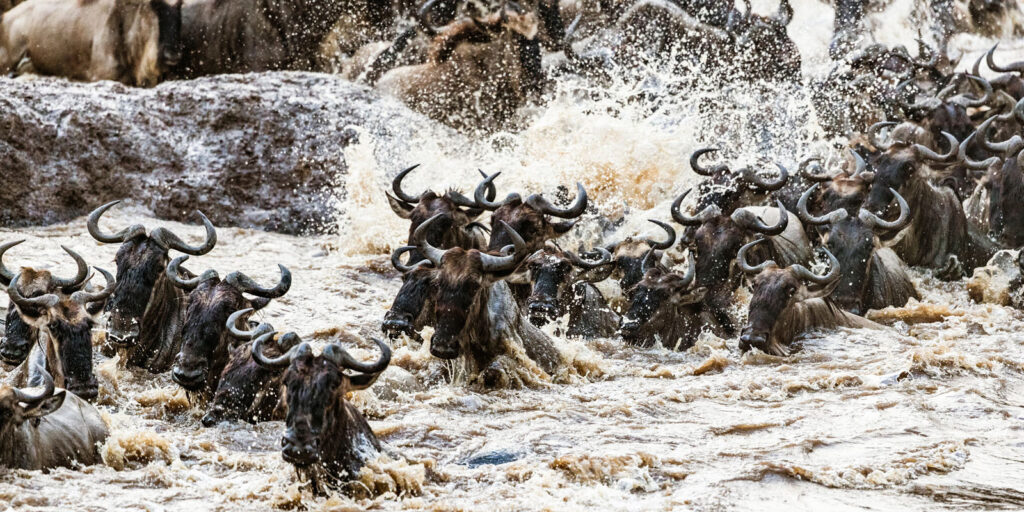
Mara River Crossings: Great Migration in July to mid-September
July through to the first two weeks of September sees the mass Mara River crossings made famous by wildlife documentaries. This takes place in the western and northern parts of the Serengeti and the Masai Mara, with the lush grasslands of the Mara being the reward for those who survive the treacherous journey!
I always recommend that people wanting to base their Great Migration safari in Kenya should in fact spend time in the private concessions, which allows access to the Masai Mara but offers a far more private safari experience as well as the opportunity to walk. You can see the overspill of the Migration in the northern Serengeti during August and the beginning of September. This region tends to be far less crowded and there are fewer camps resulting in a more private experience.
Where to see the Great Migration in September and October
The wildebeest graze in the Mara during September and during October start to make their way back to the Serengeti via the western and northern regions to start the cycle once again. The locations and dates of each part of the cycle are never exactly the same, much depending on when the rain has fallen and the availability of water and grazing.
If there is an unusually dry spell in East Africa as has happened in recent years the Migration can change, and El Niño patterns can also have an impact on rain patterns and therefore wildlife movements. During some parts of the year the herds spread out too, making the viewing less exciting, so it is always worth seeking expert advice to plan your Great Migration safari.
HIGHLIGHTS OF YOUR GREAT MIGRATION SAFARI
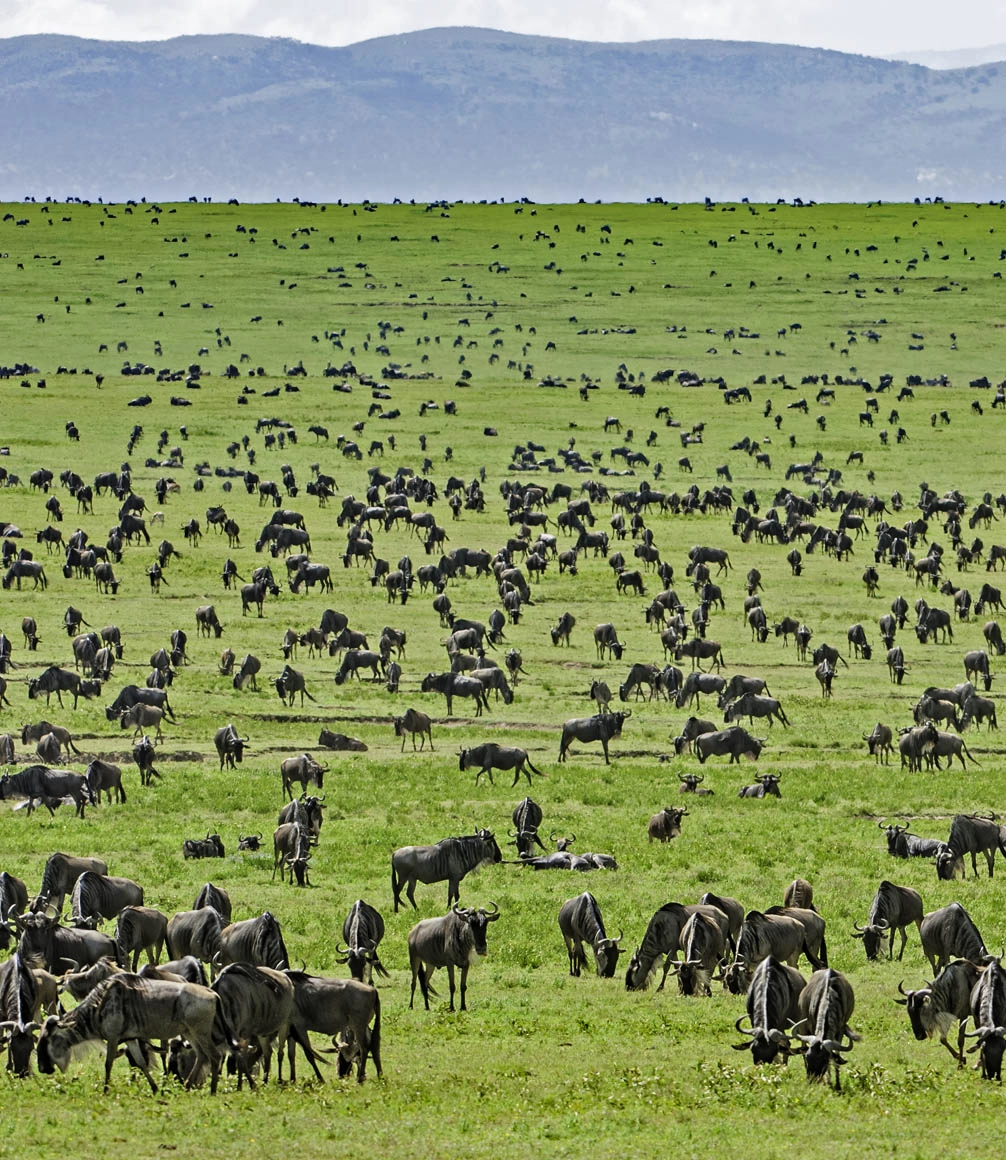
Watch the grazing herds in a private concession or quiet corner of the plains with no other tourists in sight.
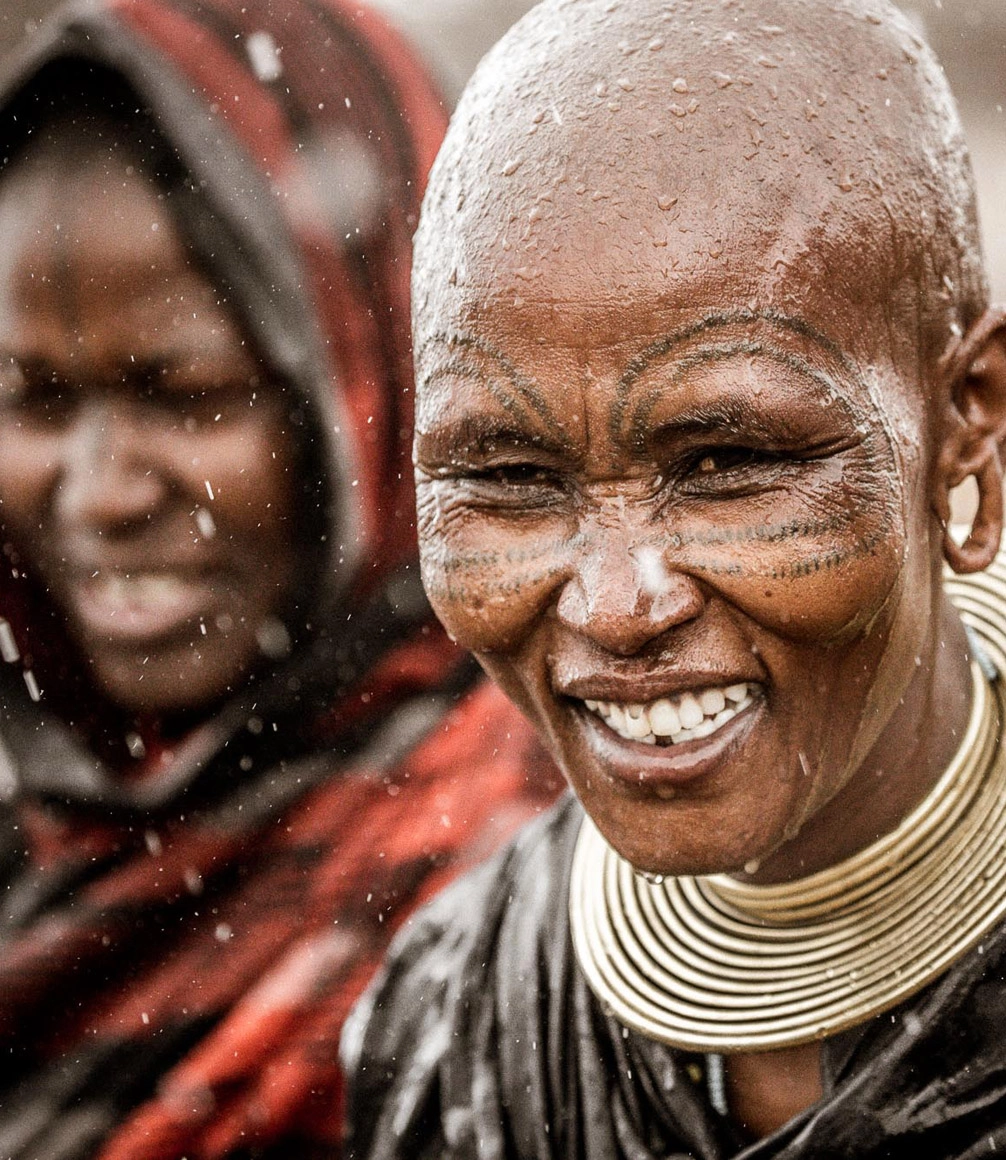
Spend time with the Datoga tribe when staying at Mwiba Lodge (photographer Scott Ramsay).
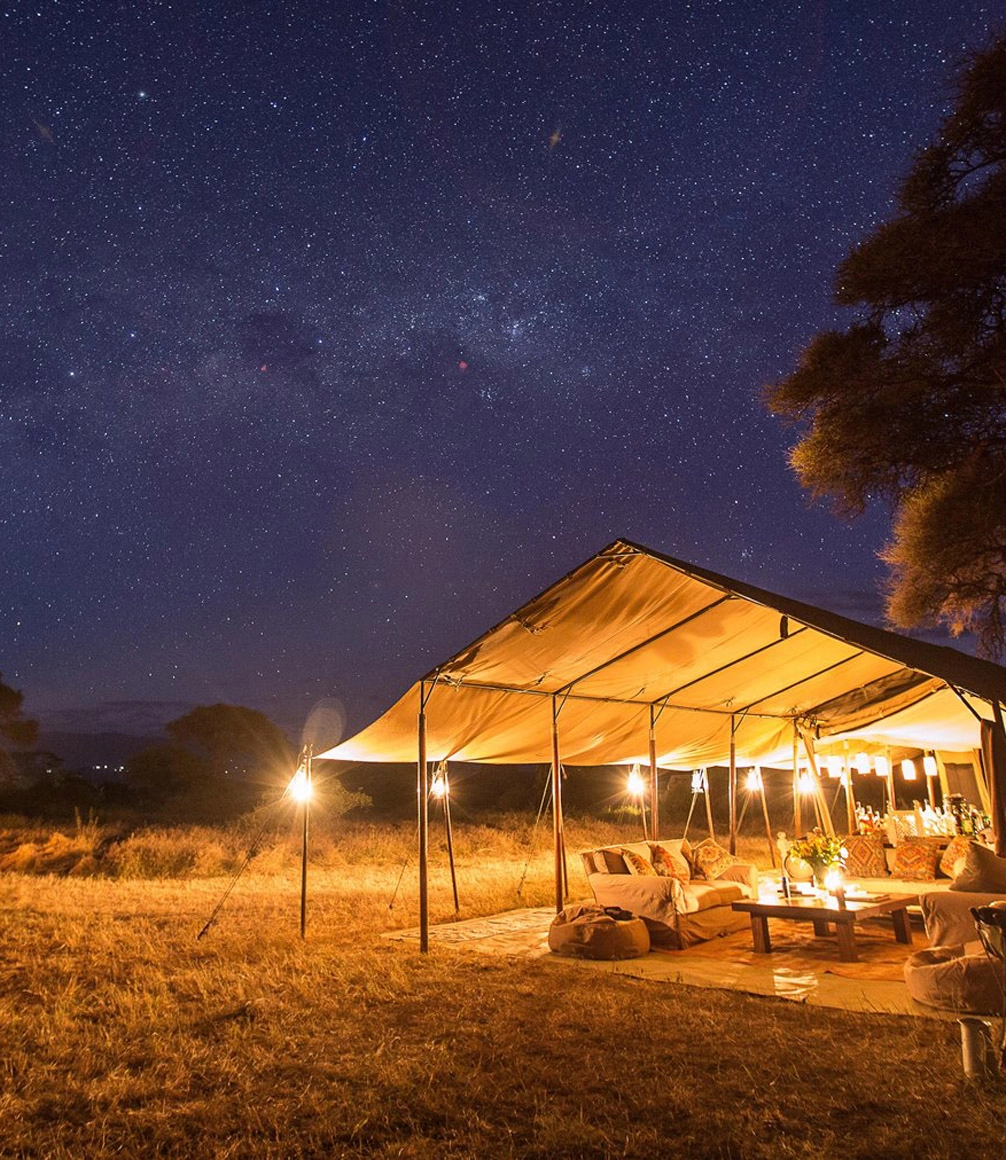
Immerse yourself in the wilderness of the Serengeti and select a private mobile camp run by expert guide Sam Stogdale.
The Best Great Migration Safari Camps
Depending on when you would like to travel, you can spend time in the Masai Mara or the Serengeti, and for those who are truly compelled by the migration, you can take in both sides of the eco-system – in Kenya and in Tanzania.
Our Top Camps for a Great Migration Safari in Tanzania
The very best way to see the migration and have a more pristine experience is from your own luxury, private mobile tented camp set up exclusively for you in the best region to see the Great Migration in Tanzania. Styled on the old safari style camps of the 1920’s. All the comforts are there – en suite hot water showers and toilets, beds with comfortable mattresses, quality linen, Persian rugs, ice cold drinks, good food and excellent guiding. You have complete flexibility and freedom each day, and you have your own private guide and vehicle so you can do, and see, exactly what you want!
In order to be away from the masses in Tanzania, I tend to recommend staying in the Maswa region in the south where you can have a tented camp erected for you or stay at a luxury tented camp where just a handful of people are allowed to be here. It also allows you the opportunity to walk. Otherwise, for those who are seeking the finest experience in luxury accommodation, then Singita is the best choice for the northern Serengeti from July through to September and Singita Grumeti, Faru Faru, Sasakwa and the tented camps in June.
Serian is another fabulous choice, run by our good friend Alex Walker and these lovely camps are set up in both the south and northern parts of the Serengeti, depending upon the migratory movements. Lastly, Legendary have a fabulous offering in the Mwiba concession with the gorgeous Mwiba Lodge. This also serves as a tremendous cultural experience, where you can meet the local Datoga tribe.
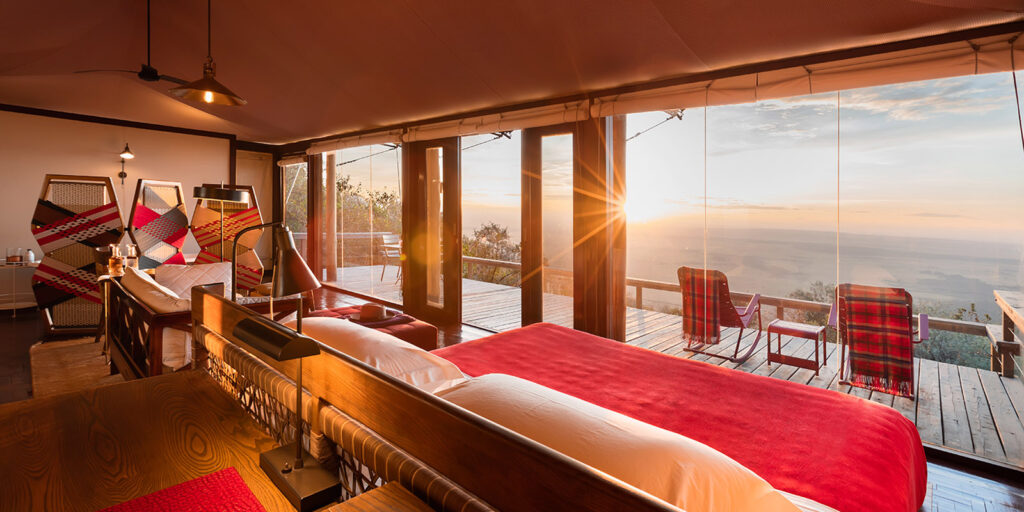
Best camps for a Great Migration safari in Kenya
For an unparalleled Great Migration safari experience in Kenya, consider Serian Nkorombo, perfectly positioned near the iconic river crossing site—you simply can’t get closer to the action than this. For those seeking intimate luxury with a touch of adventure, Sala’s Camp offers an ideal blend of comfort and proximity to the migration routes, making it a prime choice for witnessing the dramatic river crossings.
Angama Mara (pictured above), is perched on the edge of the Great Rift Valley, providing sweeping views of the Mara triangle and a haven of tranquility to return to after a day on safari. If you seek a more personalized and exclusive experience, a private mobile camp run by expert safari guide Sam Stogdale allows you to follow the migration at your own pace, ensuring an intimate connection with the wilderness that few others can offer.
Please do contact us for more information, we’d be delighted to discuss your Great Migration safari in more detail.
Ready to take the road less travelled?
Related articles
